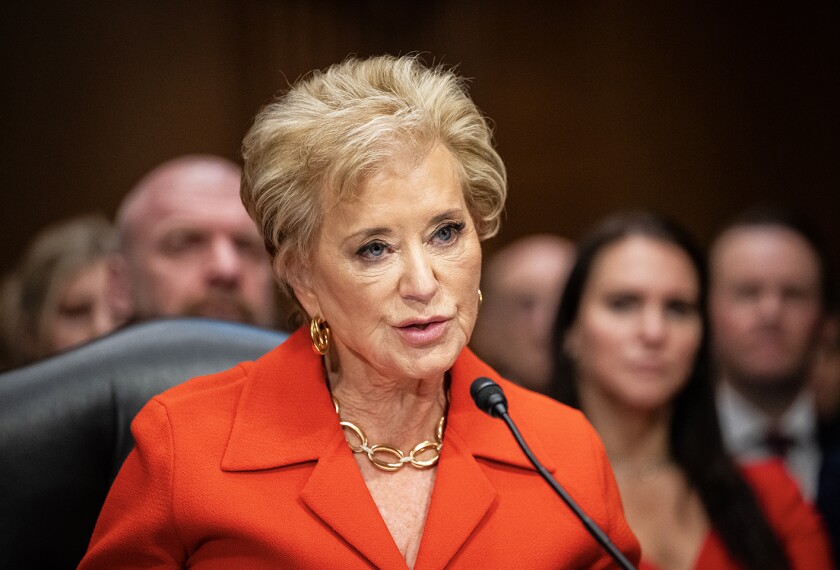The U.S. Chamber of Commerce last week brought policymakers, corporate leaders, and education professionals together here as part of an aggressive new venture to increase the business community’s involvement in education.
The three-day meeting, Oct. 5-7, marked the first public gathering of the Business Education Network, a coalition supported by the Washington-based chamber and other business organizations and corporations, to address issues facing public education. It focused primarily on building partnerships between business and education to improve American competitiveness and student achievement.
“One of the things that we’re struggling with is priorities,” said Stephen Jordan, who directs the chamber’s Center for Corporate Citizenship, which co-hosted the event along with 10 national corporations. “There is a company involved in almost every single aspect of the educational process,” he noted. “What would happen if we could concentrate some firepower?”
Tom Luce, the assistant secretary of the U.S. Department of Education’s office of planning, evaluation, and policy development, agreed that the sprawling K-12 system would not be transformed “if you don’t prioritize and you don’t take things to scale. That’s the central issue the business community has to face,” he said.
But, as discussions here made clear, there’s a long list of priorities clamoring for business leaders’ attention, from redesigning high schools to improving school leadership. One unifying goal is the need to improve the collection and dissemination of education data, argued Mr. Luce, noting, “You cannot run your businesses without data.”
Others asserted that companies could coalesce around the unifying mission of preparing all young people for work, further learning, and citizenship.
Whatever priorities companies pick, said Scott Smith, the president of the Chicago-based Tribune Publishing Co. and the founder of the Chicago Public Education Fund, “I would say for any of us, ‘Stay focused, go deep.’ ”
Those gathered here said the pressure on schools to produce results, in large part because of the federal No Child Left Behind Act, has generated a particularly ripe climate for partnerships between business and education.
“The conversation is so different,” said Margery W. Mayer, the president of the New York City-based Scholastic Education, a publisher of print and computerized products to improve precollegiate reading achievement. “We’re talking about schools that are really focused on accountability now.”
Pressure and Support
Businesses can provide a powerful combination of pressure and support, those gathered here said, but they must convince educators that they are on their side.
“You just can’t come in and tell folks how bad they are,” said G. Thomas Houlihan, the executive director of the Washington-based Council of Chief State School Officers.
Dana E. Egreczky, the president of the New Jersey Chamber of Commerce’s Business Coalition for Educational Excellence, worried, “There is a certain amount of apathy in the business community, particularly among small and medium-sized businesses.” Without them, she cautioned, “we’re not going to get very far.”
The meeting included the public unveiling of the Business Education Network Web site, www.businesseducationnetwork.net..
The information clearinghouse includes descriptions of more than 300 effective partnerships, forum discussions, and tool kits for collaboration between business and education.
“We’re seeing the achievement gap starting to narrow and test scores starting to improve, but we can’t let up,” said Edward B. Rust Jr., the chairman and chief executive officer of State Farm Insurance, based in Bloomington, Ill.
“There is no time for recess,” he said, noting that developing nations are picking up on America’s best practices “and they’re scaling them.”




